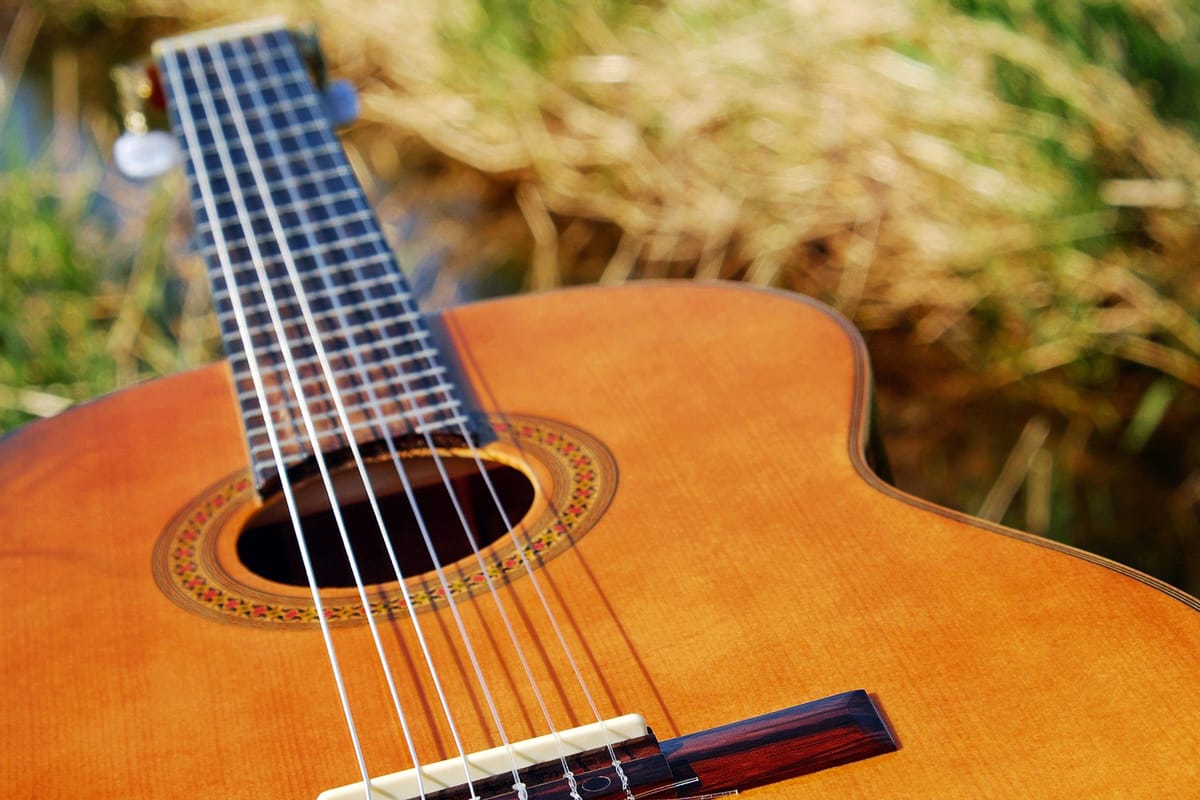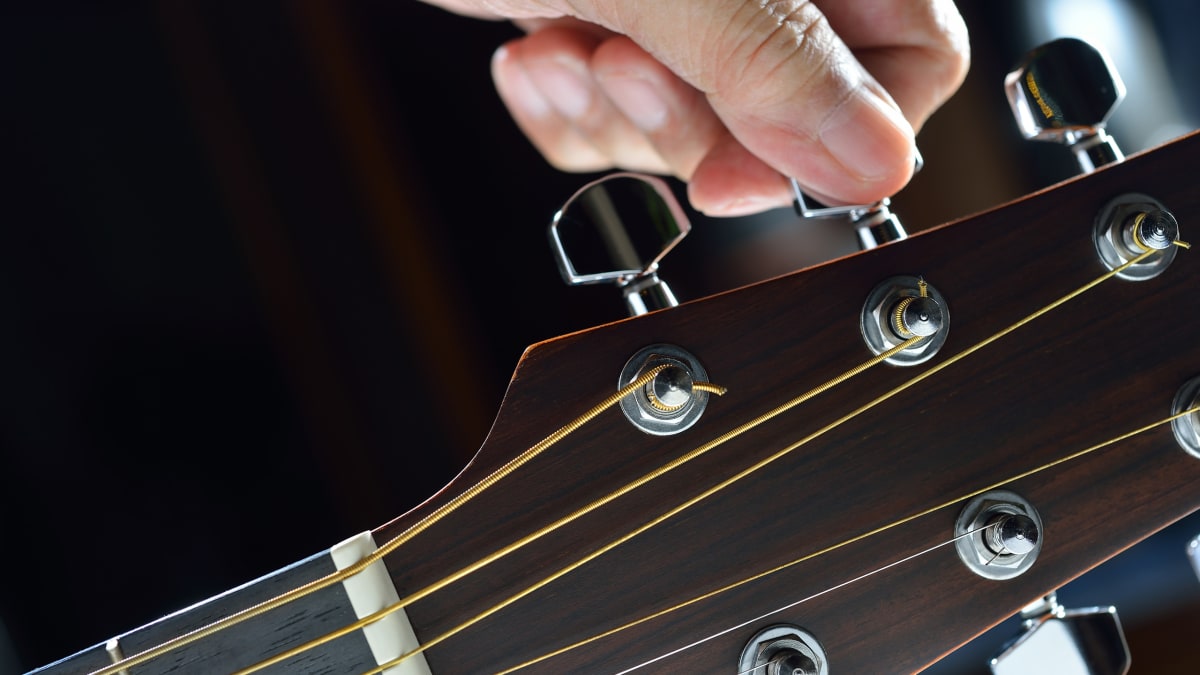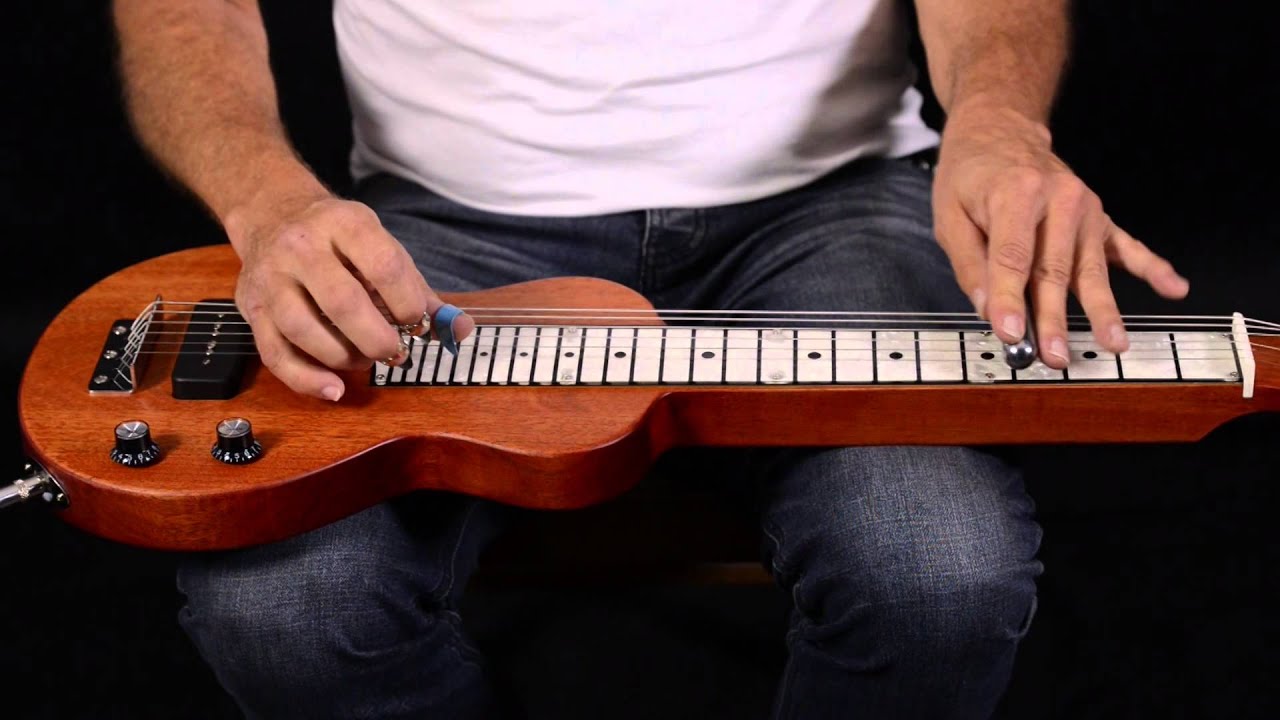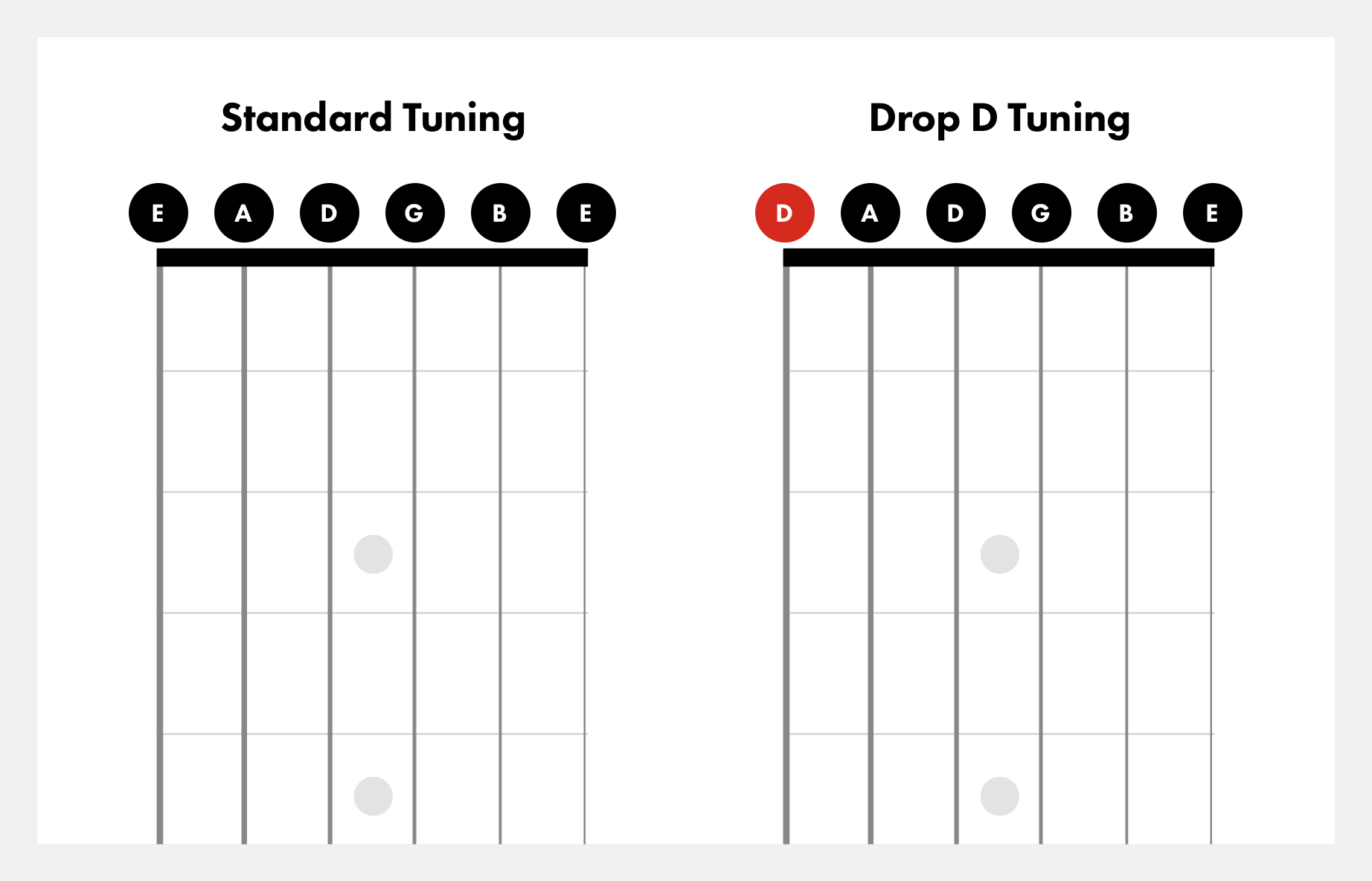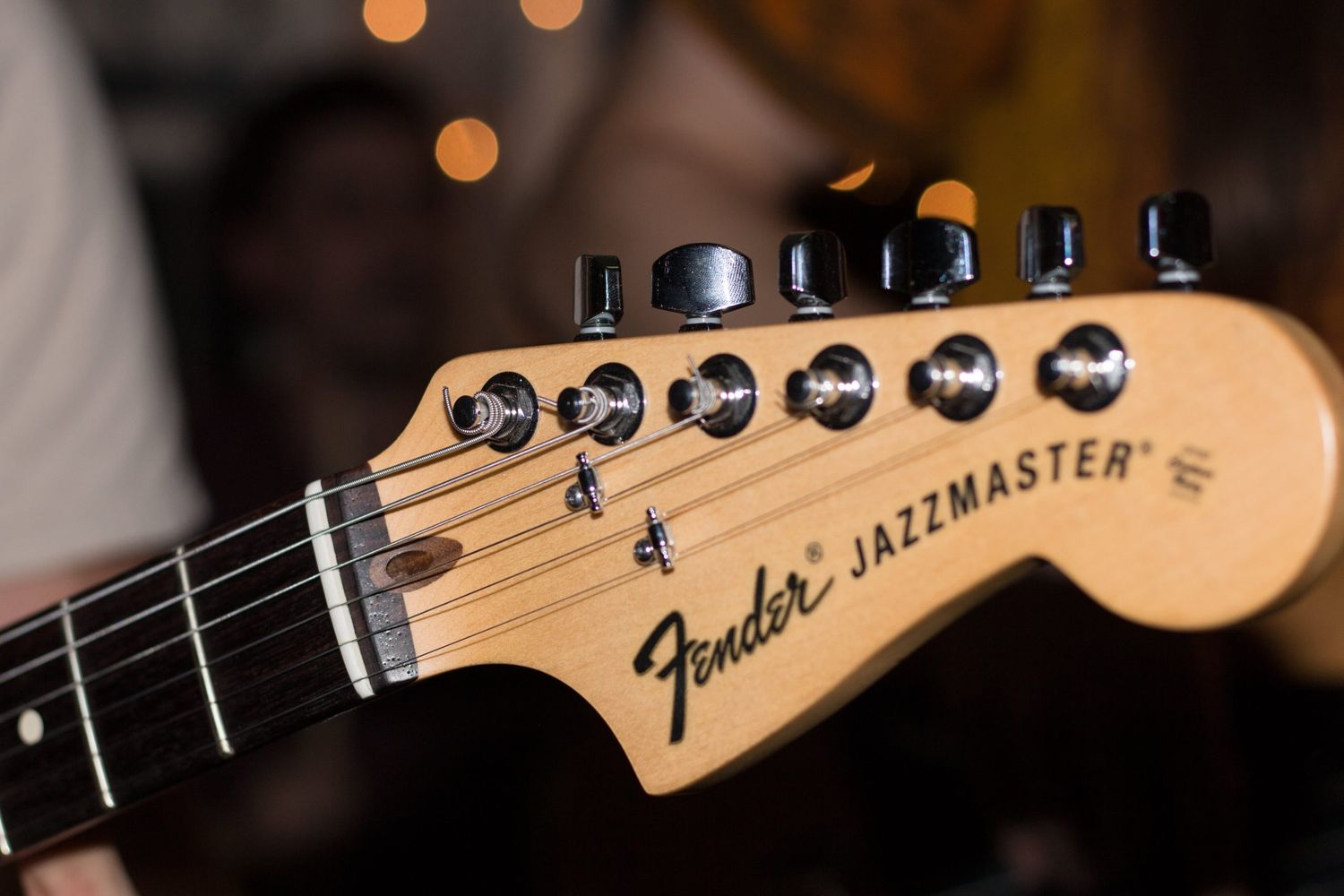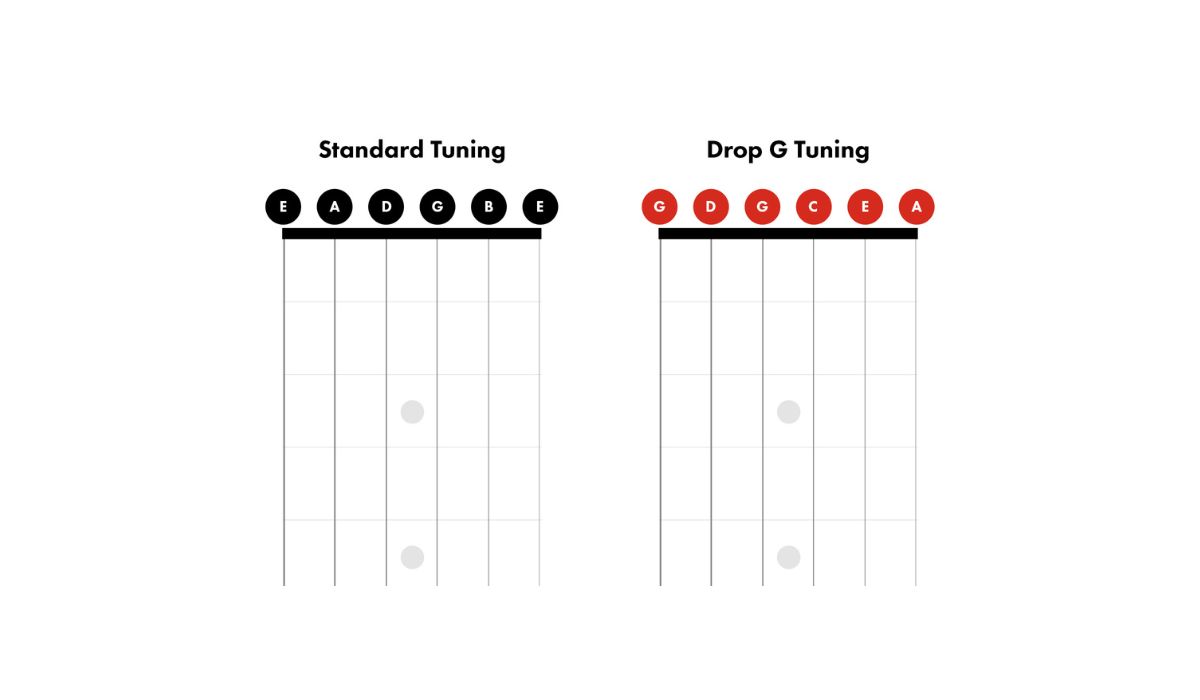Home>Instruments>Guitar>How Do I Tune A Guitar


Guitar
How Do I Tune A Guitar
Modified: February 15, 2024
Learn how to tune a guitar with our step-by-step guide. Keep your guitar sounding great with our easy tuning tips and techniques.
(Many of the links in this article redirect to a specific reviewed product. Your purchase of these products through affiliate links helps to generate commission for AudioLover.com, at no extra cost. Learn more)
Table of Contents
Introduction
So, you've got your hands on a guitar and you're ready to start playing. But before you can create those melodious tunes, there's an essential step you need to master: tuning your guitar. Whether you're a beginner or an experienced player, understanding how to tune your guitar is fundamental to producing beautiful music.
Tuning a guitar involves adjusting the tension of the strings to ensure they produce the correct pitches. This process is crucial because even a slightly out-of-tune guitar can make your music sound off-key and dissonant. Fortunately, with the right guidance, tuning your guitar can be an enjoyable and rewarding experience.
In this comprehensive guide, we'll delve into the art of tuning a guitar, exploring standard and alternate tunings, various tuning methods, and the tools you can use to achieve pitch-perfect results. By the end of this journey, you'll be equipped with the knowledge and skills to tune your guitar with confidence, whether you're aiming for the classic standard tuning or seeking to explore unique alternative tunings.
Tuning your guitar is not just a technical necessity; it's a gateway to unlocking the full potential of your instrument. So, let's embark on this musical adventure together and unravel the secrets of guitar tuning. Whether you're strumming an acoustic guitar by the campfire or shredding on an electric guitar onstage, mastering the art of tuning will set the stage for an incredible musical journey.
Understanding Guitar Tuning
Before diving into the intricacies of tuning a guitar, it’s essential to grasp the foundational concepts of guitar tuning. A standard-tuned guitar features six strings, each designated to produce a specific pitch when plucked. The strings are typically tuned to the following notes, from the lowest-pitched string to the highest:
- E – the thickest string
- A
- D
- G
- B
- e – the thinnest string
These notes create a harmonious blend when played together, forming the basis for countless musical compositions. Understanding the standard tuning provides a solid foundation for exploring alternate tunings, which can evoke distinct moods and textures.
Moreover, comprehending the relationship between string tension and pitch is crucial. Tightening a string raises its pitch, while loosening it lowers the pitch. This fundamental principle underpins the entire process of guitar tuning, whether you’re using a digital tuner, tuning by ear, or employing other methods.
Furthermore, it’s important to note that different styles of music and playing techniques may call for specific tunings to achieve desired tonal qualities. For instance, alternate tunings can facilitate unique chord voicings, resonant drones, and rich harmonic textures, expanding the sonic palette available to guitarists.
By understanding the fundamentals of guitar tuning, you’ll gain a deeper appreciation for the instrument’s versatility and the myriad of tonal possibilities at your fingertips. Whether you’re aiming for the classic sounds of standard tuning or venturing into the realm of alternate tunings, this knowledge forms the bedrock of your musical journey.
Standard Tuning
Standard tuning is the most widely used tuning for the six-string guitar. As mentioned earlier, the strings are typically tuned to the following notes: E, A, D, G, B, and e. This configuration allows for versatile chord voicings, melodic patterns, and scale shapes that form the core of many musical genres.
One of the defining characteristics of standard tuning is its balance between chordal and melodic possibilities. The intervals between adjacent strings create a consistent pattern, facilitating familiar chord shapes and scale patterns across the fretboard. This symmetry contributes to the guitar’s accessibility for both rhythm and lead playing, making it a popular choice for beginners and seasoned players alike.
Standard tuning serves as the foundation for countless iconic songs and compositions across genres such as rock, pop, blues, and folk. Its familiar sound has become deeply ingrained in the collective musical consciousness, making it a go-to choice for musicians seeking a versatile and universally recognizable tonal palette.
Moreover, the ubiquity of standard tuning has led to the development of comprehensive educational resources, including chord charts, scale diagrams, and instructional materials tailored specifically to this tuning. This abundance of learning materials empowers aspiring guitarists to progress rapidly and confidently, knowing that the skills and knowledge acquired in standard tuning will translate seamlessly to various musical contexts.
Whether you’re strumming open chords, unleashing blistering solos, or exploring intricate fingerstyle arrangements, standard tuning provides a solid platform for musical expression. Its widespread adoption and inherent musicality make it an indispensable tuning for guitarists of all levels, laying the groundwork for creative exploration and self-expression through the instrument.
Alternate Tunings
While standard tuning is the bedrock of guitar playing, alternate tunings offer a gateway to a rich tapestry of sonic possibilities. By deviating from the conventional EADGBE configuration, guitarists can unlock new textures, resonances, and chord voicings, expanding their creative horizons and redefining the instrument’s sonic landscape.
One of the most popular alternate tunings is Drop D, where the sixth string is tuned down a whole step to D, creating a powerful low end and enabling robust power chords with minimal finger movement. This tuning has found widespread use in rock, metal, and acoustic genres, offering a compelling blend of accessibility and sonic depth.
Open tunings, such as Open D and Open G, involve tuning the guitar to form a major chord when strummed open, allowing for the effortless creation of rich, resonant sounds. These tunings have been embraced by slide guitarists and singer-songwriters, providing a lush backdrop for evocative melodies and soul-stirring harmonies.
Beyond these examples, a myriad of alternate tunings awaits exploration, each with its own distinct character and expressive potential. From the ethereal atmospheres of Open C to the haunting allure of DADGAD, these tunings can inspire fresh musical ideas and spark creative innovation.
It’s important to note that alternate tunings can influence not only the harmonic possibilities but also the playing techniques and fretting strategies employed by guitarists. As such, delving into alternate tunings can cultivate a deeper understanding of the instrument and enrich one’s musical vocabulary.
Ultimately, alternate tunings offer a boundless realm of inspiration, inviting guitarists to embark on a sonic journey that transcends the confines of standard tuning. Whether you’re seeking to evoke haunting textures, craft emotive ballads, or push the boundaries of sonic experimentation, alternate tunings stand as a testament to the guitar’s limitless potential for creative expression.
Tuning Methods
When it comes to tuning a guitar, several methods are available, each offering its own advantages and nuances. Whether you prefer the precision of digital tuners or the ear-training benefits of tuning by ear, understanding these methods empowers you to maintain pitch-perfect tuning for your instrument.
1. Using a Tuner: Digital tuners have become indispensable tools for guitarists, providing accurate and convenient tuning assistance. Whether in the form of clip-on tuners, pedal tuners, or smartphone apps, these devices detect the pitch of each string and display visual cues to guide you toward the correct tuning. With their user-friendly interfaces and real-time feedback, digital tuners offer a reliable and efficient method for achieving precise tuning.
2. Tuning by Ear: Tuning by ear is a valuable skill that allows guitarists to develop a keen sense of pitch and intonation. By comparing the pitch of each string to a reference pitch, such as a piano, pitch pipe, or another tuned instrument, you can train your ears to discern subtle differences in pitch and fine-tune your guitar accordingly. While it may require practice and patience, tuning by ear fosters a deeper musical connection and enhances your overall musicianship.
3. Online Tuning Tools: Various websites and apps offer online tuners that generate reference tones for each string, enabling you to tune your guitar using your computer or mobile device. These tools can be particularly useful when a physical tuner is not readily available, providing a convenient alternative for achieving accurate tuning.
4. Pitch Pipes and Tuning Forks: Traditional yet effective, pitch pipes and tuning forks produce specific pitches to serve as references for tuning your guitar. By sounding the pitches of the strings against the tones generated by these devices, you can align your guitar strings with the desired pitches, ensuring harmonious and accurate tuning.
Each tuning method offers its own set of advantages, and mastering multiple approaches can further enhance your proficiency as a guitarist. Whether you rely on the precision of digital tuners, the ear-training benefits of tuning by ear, or a combination of methods, the ability to maintain optimal tuning is essential for realizing the full potential of your instrument.
Using a Tuner
When it comes to achieving precise tuning for your guitar, using a tuner is a highly effective and convenient method. Digital tuners, available in various forms such as clip-on tuners, pedal tuners, and smartphone apps, have revolutionized the process of tuning a guitar, offering unparalleled accuracy and user-friendly interfaces.
One of the key advantages of using a tuner is the real-time feedback it provides. When you pluck a string, the tuner detects the pitch and visually indicates whether the string is tuned too low, too high, or perfectly in tune. This immediate feedback allows for swift adjustments, ensuring that each string reaches the desired pitch with precision.
Furthermore, digital tuners often display the note name corresponding to the detected pitch, making it easy to identify and adjust the tuning of each string. This feature is especially beneficial for beginners who are still familiarizing themselves with the standard tuning notes and their respective positions on the guitar.
Another advantage of using a tuner is its versatility and portability. Clip-on tuners can be conveniently attached to the headstock of the guitar, allowing for hands-free tuning without the need for additional cables or setup. Pedal tuners integrate seamlessly into pedalboards, offering professional musicians a reliable tuning solution during live performances and studio sessions. Additionally, smartphone apps provide a portable and cost-effective alternative, leveraging the device’s microphone to analyze string pitches and guide the tuning process.
For acoustic-electric guitars, many onboard preamp systems feature built-in tuners, enabling players to tune their guitars directly through the instrument’s output, further streamlining the tuning process for live performances and rehearsals.
Ultimately, using a tuner empowers guitarists to achieve optimal tuning with speed and precision, enhancing the overall playing experience and ensuring that the instrument resonates with clarity and accuracy. Whether you’re a beginner seeking to develop a keen ear for pitch or a seasoned player aiming for seamless tuning in diverse musical settings, a reliable tuner is an indispensable tool for maintaining pitch-perfect harmony on your guitar.
Tuning by Ear
Tuning a guitar by ear is a valuable skill that fosters a deep connection with the instrument and enhances a guitarist’s musical acumen. While digital tuners offer precise and convenient tuning assistance, developing the ability to tune by ear empowers guitarists to refine their sense of pitch, intonation, and musical expression.
One of the key benefits of tuning by ear is the cultivation of a heightened musical ear. By learning to recognize and reproduce specific pitches, guitarists develop a keen sense of relative pitch, enabling them to discern intervals and harmonies with greater clarity. This heightened auditory perception extends beyond tuning, enriching the overall musical experience and facilitating a deeper understanding of melodic and harmonic relationships.
Furthermore, tuning by ear encourages active engagement with the instrument, fostering a more intuitive and personalized approach to tuning. By relying on your ears to guide the tuning process, you develop a deeper connection with the instrument, honing your ability to coax the optimal resonance and tonal quality from each string.
Moreover, tuning by ear is a practical skill that transcends the limitations of relying on external devices. Whether you find yourself in a situation without access to a tuner or simply wish to develop greater independence as a musician, the ability to tune by ear ensures that you can maintain optimal pitch and intonation under diverse circumstances.
While tuning by ear may initially pose challenges, consistent practice and attentive listening can lead to significant improvements in your ability to discern subtle pitch variations and achieve precise tuning. Over time, this skill becomes an invaluable asset, allowing you to tune your guitar with confidence and accuracy in any musical setting.
Ultimately, tuning by ear offers a pathway to musical self-sufficiency and a deeper understanding of the instrument’s sonic nuances. Whether you’re honing your ear for pitch, seeking to develop a more intimate connection with your guitar, or simply embracing a traditional and time-honored approach to tuning, mastering the art of tuning by ear enriches your musical journey and fosters a profound appreciation for the instrument’s expressive potential.
Conclusion
Embarking on the journey of guitar tuning unveils a world of sonic exploration and musical discovery. Whether you opt for the classic standard tuning or venture into the realm of alternate tunings, the process of achieving pitch-perfect harmony on your guitar is a fundamental aspect of musicianship that intertwines technical precision with artistic expression.
By understanding the foundational principles of guitar tuning and exploring various tuning methods, you equip yourself with the tools to maintain optimal pitch and intonation, ensuring that your instrument resonates with clarity and musicality. Whether you rely on digital tuners for precision, cultivate the skill of tuning by ear, or embrace a combination of methods, the ability to achieve pitch-perfect tuning empowers you to unleash the full potential of your guitar.
Moreover, the journey of guitar tuning transcends the technical aspects, offering a gateway to a deeper musical connection and a heightened appreciation for the instrument’s versatility. Whether you’re strumming chords, picking melodies, or crafting intricate compositions, the art of tuning becomes an integral part of your musical identity, shaping the way you perceive, interact with, and express yourself through the guitar.
As you continue on your musical odyssey, remember that the process of tuning your guitar is not merely a technical necessity; it is a transformative experience that enriches your relationship with the instrument and amplifies your capacity for creative expression. Whether you’re a beginner taking your first steps in the world of guitar playing or an experienced guitarist seeking new avenues of sonic exploration, the art of tuning stands as a cornerstone of your musical journey, resonating with the harmony and potential that defines the essence of guitar playing.
So, let the strings of your guitar resonate with precision and passion, for within the art of tuning lies the key to unlocking the boundless realms of musical expression and the timeless allure of the guitar.

